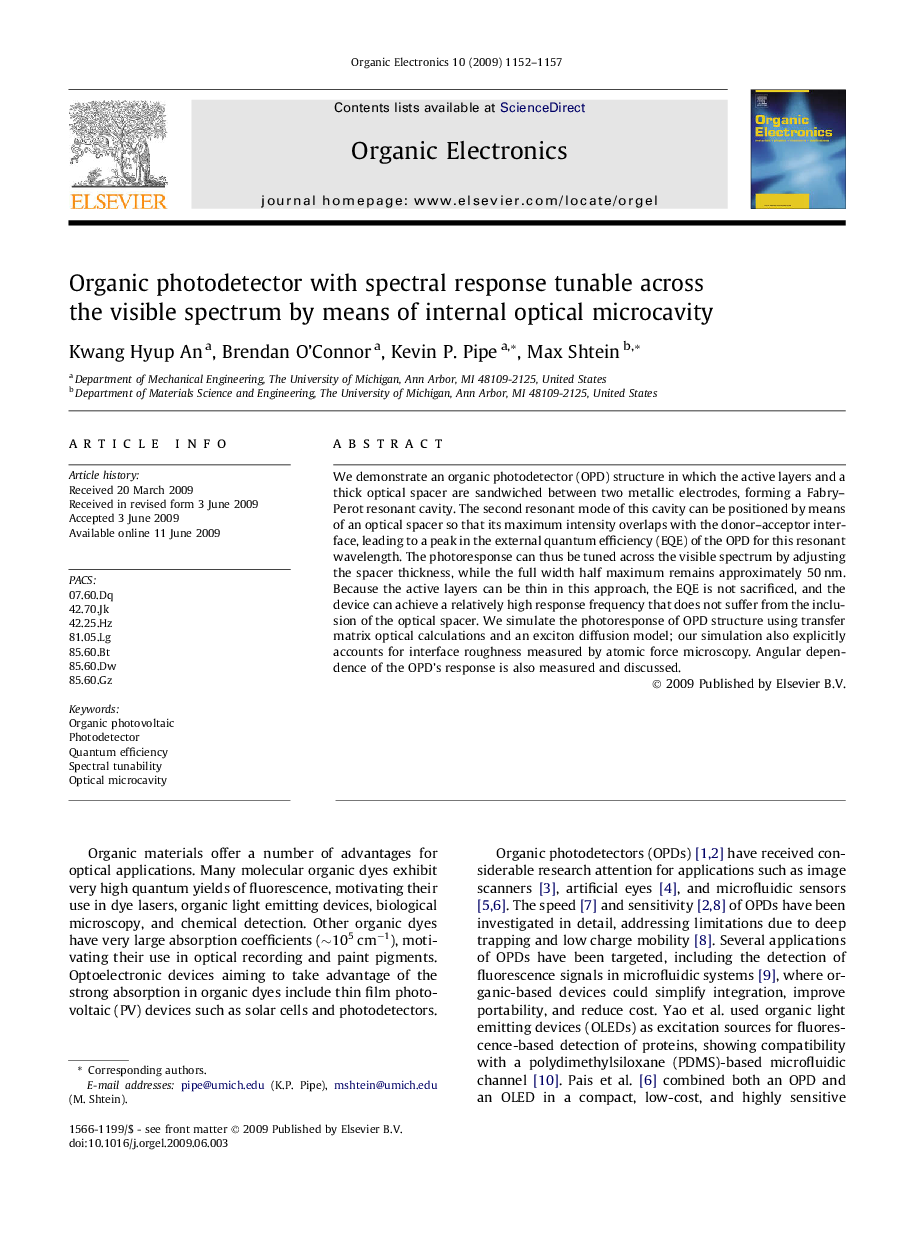| Article ID | Journal | Published Year | Pages | File Type |
|---|---|---|---|---|
| 1265025 | Organic Electronics | 2009 | 6 Pages |
We demonstrate an organic photodetector (OPD) structure in which the active layers and a thick optical spacer are sandwiched between two metallic electrodes, forming a Fabry–Perot resonant cavity. The second resonant mode of this cavity can be positioned by means of an optical spacer so that its maximum intensity overlaps with the donor–acceptor interface, leading to a peak in the external quantum efficiency (EQE) of the OPD for this resonant wavelength. The photoresponse can thus be tuned across the visible spectrum by adjusting the spacer thickness, while the full width half maximum remains approximately 50 nm. Because the active layers can be thin in this approach, the EQE is not sacrificed, and the device can achieve a relatively high response frequency that does not suffer from the inclusion of the optical spacer. We simulate the photoresponse of OPD structure using transfer matrix optical calculations and an exciton diffusion model; our simulation also explicitly accounts for interface roughness measured by atomic force microscopy. Angular dependence of the OPD’s response is also measured and discussed.
